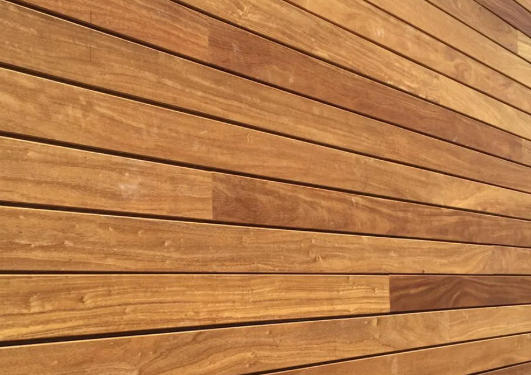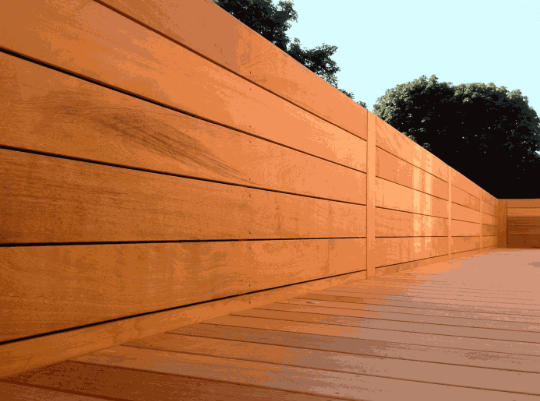










Content Menu
● Tree Characteristics and Growth Behavior
● Anatomical and Mechanical Properties
● Texture, Color, and Appearance
● Sustainability and Conservation
● Health and Safety Considerations
● Cultural Heritage and Spiritual Symbolism
● FAQs
>> 1. What countries produce the most Iroko wood?
>> 2. Why is Iroko called African teak?
>> 3. How long does Iroko wood last outdoors?
>> 4. Is Iroko suitable for marine environments?
>> 5. How should Iroko be maintained?
Iroko wood, often referred to as “African teak,” originates from the tropical regions of Africa and is highly valued around the world for its striking appearance, natural durability, and versatile applications. Sourced primarily from large deciduous trees belonging to the Milicia genus, particularly Milicia excelsa and Milicia regia, this wood has become a go-to alternative to genuine teak for designers, builders, and artisans alike.[1][3][4]

Iroko wood is an African tropical hardwood that grows in massive forest trees across the equatorial belt. The species can reach heights of 30–50 meters and trunk diameters up to 1.5 meters. Its average dried weight is 660 kg/m³, placing it in the medium-to-heavy hardwood group. The heartwood is beautifully golden brown, often darkening over time into rich amber hues, while the sapwood remains pale and clearly distinct.[4][1]
Two species produce Iroko timber:
- *Milicia excelsa* – Widely found across Central and Eastern Africa.
- *Milicia regia* – Primarily found in West Africa including Ghana, Gambia, and Ivory Coast.[10][4]
Both species share nearly identical physical traits, though *M. excelsa* is harvested more frequently due to its wider range.
The Iroko tree's natural habitat spans West, Central, and East Africa, with rich populations growing in countries such as Nigeria, Ghana, Cameroon, Mozambique, Tanzania, and Uganda. The trees flourish in lowland tropical rainforests, though they adapt well to mixed woodland and savanna zones.[6][4]
Key producing countries include:
- Ghana
- Nigeria
- Cameroon
- Ivory Coast
- Mozambique
- Tanzania
- Kenya
- Gambia
- Sierra Leone
- Congo
These regions provide the warm, humid climates and fertile soils that support the species' growth. Iroko's deep roots allow it to thrive even in marginal soils, providing critical environmental benefits such as soil stabilization, erosion prevention, and carbon absorption.[11][4]
Iroko trees are impressive in stature and longevity—some live up to 500 years. Their root systems are vast, providing resilience against tropical storms and preventing soil compaction. The bark is dark grayish-brown, and the broad canopy provides habitat and shade for birds and smaller fauna.[7][4]
The wood forms when the tree matures over decades, producing dense heartwood resistant to rot and insect attack—traits that contribute to Iroko's reputation as a “lifetime wood.”
Iroko is renowned not only for its beauty but also for its strength. The following data demonstrates its structural reliability:
| Property | Measured Value |
|---|---|
| Average Dried Weight | 660 kg/m³ |
| Specific Gravity | 0.56 – 0.66 |
| Janka Hardness | 1,190–1,260 lbf |
| Modulus of Rupture (MOR) | 14,080 lbf/in⊃2; |
| Elastic Modulus (MOE) | 1.58 million lbf/in⊃2; |
| Crushing Strength | 7,750 lbf/in⊃2; |
| Tangential Shrinkage | 4.8–5.4% |
| Radial Shrinkage | 3.3–3.5% |
| Stability | Moderately stable in service |
These figures highlight why Iroko is widely used in boatbuilding, architectural joinery, and heavy-duty furniture—its balance between hardness and flexibility makes it incredibly reliable in variable climates.
Iroko's heartwood is golden yellow to medium brown, deepening over time into a darker amber or even chocolate tone. The grain is typically interlocked and may contain calcium carbonate deposits, lending it a slight sparkle but increasing tool wear during machining.[8][1][6][7]
The wood has a medium to coarse texture and a natural luster, giving a warm, rich look similar to teak. When left unfinished outdoors, Iroko develops a beautiful silver-grey patina, making it ideal for natural-weathered architectural designs.[8]

Iroko ranks as one of the most durable African timbers, exhibiting natural resistance to fungi, termites, marine borers, and weathering. According to European durability classifications, it falls under Class 1-2, meaning “very durable to durable.” The heartwood is particularly resistant to decay, while the sapwood is less so and must be carefully processed.[5][9][7]
Its natural compounds, including chlorophorin, act as antioxidants that prevent microbial growth—reducing the need for chemical treatment. For this reason, untreated Iroko is commonly used in marine environments, where exposure to moisture and salt would quickly damage lesser woods.[2]
While not listed under CITES, *Milicia excelsa* is designated Vulnerable by the IUCN due to habitat degradation and uncontrolled felling. Sustainable management initiatives in Ghana, Cameroon, and Tanzania now regulate logging through replanting programs and forest certification systems.[11]
Eco-conscious suppliers promote FSC-certified Iroko, ensuring traceability from harvest to export. Moreover, Iroko's ability to absorb CO₂ and contribute to soil fertility further enhances its environmental value.[4]
Woodworkers appreciate Iroko for its ease of machining, provided sharp tools are used. The interlocked grain requires careful planer alignment to avoid tear-out, and its mineral composition can dull edges quickly.[6][7]
Despite these challenges, it glues, nails, and stains well, producing excellent finishes. Before painting or varnishing, the wood's natural oils must be removed with methylated spirits for best adhesion. Kiln drying is recommended, as the wood seasons quickly with minimal distortion or cracking, improving stability for structural projects.[7]
While Iroko is not highly toxic, its dust can cause mild irritations, especially to sensitive individuals. Reported symptoms include eye and skin irritation, respiratory discomfort, or allergic reactions in prolonged exposure scenarios. Standard safety measures such as dust extraction and protective gear are recommended during machining and sanding operations.[1]
The Iroko tree carries profound cultural importance in many African societies. Among the Yoruba of Nigeria, it symbolizes strength, fertility, and longevity. Some legends warn that cutting down an Iroko tree without ritual permission could summon misfortune.[12]
In traditional ceremonies, its wood is used to craft ritual drums, ceremonial masks, and ancestral statues, while its bark serves medicinal purposes in treating ailments such as heart disease, coughs, and diarrhea. Thus, Iroko is not only a material resource but also a symbol of spiritual connection between humanity and nature.[12]
In contemporary architecture and manufacturing, Iroko remains a top choice for premium builds. Designers and builders use it for:
- High-end furniture – Widely used in luxury interiors and outdoor sets.
- Boatbuilding & marine decking – Perfect for yachts, docks, and ship interiors.
- Architectural cladding & doors – Provides longevity and elegance.
- Flooring and staircases – Ideal for tropical or coastal regions.
- Veneers & decorative panels – Offers teak-like elegance at a lower cost.[6][8]
Its combination of durability, aesthetic depth, and cost efficiency ensures enduring popularity.
| Feature | Iroko (African Teak) | Genuine Teak | Sapele |
|---|---|---|---|
| Hardness (Janka) | 1,260 lbf | 1,070 lbf | 1,410 lbf |
| Specific Gravity | 0.55–0.66 | 0.67 | 0.63 |
| Origin | Africa | Southeast Asia | Africa |
| Weather Resistance | Excellent | Excellent | Good |
| Maintenance | Low | Moderate | Moderate |
| Price | Affordable | High | Medium |
This comparison illustrates why Iroko is embraced globally as a practical replacement for teak—it combines near-identical performance traits at a fraction of the price.[13]
Iroko's low maintenance appeal is one of its strongest assets. When oiled periodically, the golden tone remains rich and vibrant. However, if left untreated outdoors, the surface gradually ages to a silvery-grey patina without compromising the underlying structure.[7]
Routine wiping with teak oil or Danish oil will preserve its finish and retard natural darkening. In marine use, occasional re-oiling ensures protection from UV exposure.
In terms of service life, properly constructed exterior Iroko structures can last 40–60 years or more, depending on climate and maintenance routine.[14][15]
From the forests of West and Central Africa, Iroko wood emerges as a natural gem—rich in character, strength, and meaning. Known worldwide as “African teak,” it provides a sustainable balance between beauty, durability, and affordability. As global demand grows for eco-friendly hardwoods, Iroko stands out as a responsible choice—highly durable, renewable, and rooted in deep cultural heritage. Its fusion of technical reliability and natural elegance ensures its place as one of the world's most versatile tropical hardwoods.[3][15][11]

The main exporters of Iroko include Ghana, Nigeria, Cameroon, Ivory Coast, and Mozambique, spanning West and Central Africa.[3][4]
Iroko is often termed “African teak” due to its teak-like appearance and properties such as water resistance, stability, and rot-proof qualities—yet it's more sustainable and cost-effective.[13][3]
With minimal maintenance, Iroko structures can last over 40 years even in harsh climates, making it one of the toughest outdoor timbers.[15][14][6]
Yes. Its natural oils and high silica content make it ideal for boats, decks, and docks, withstanding moisture and salt exposure.[8][6]
Simply clean the surface regularly and apply wood oil once or twice a year. Untreated Iroko will gracefully weather to a grey tone without losing performance.[7][8]
[1](https://www.wood-database.com/iroko/)
[2](https://www.ohc.net/wp-content/uploads/2020/03/IROKO-1.pdf)
[3](https://www.mcilvain.com/iroko/)
[4](https://cameroontimberexport.com/iroko-wood-properties-characteristics-uses/)
[5](https://www.ohc.net/wp-content/uploads/2020/03/Iroko-Technical-Data-.pdf)
[6](https://rahlumber.com/product/iroko/)
[7](https://www.anyonewood.com/iroko/)
[8](https://www.rarewoodsusa.com/species/iroko/)
[9](https://tropix.cirad.fr/FichiersComplementaires/EN/Africa/IROKO%202023.pdf)
[10](https://pfaf.org/user/Plant.aspx?LatinName=Milicia+regia)
[11](https://glveneer.com/species/african-teak-iroko/)
[12](https://www.thorogood.co.uk/the-irokos-indomitable-role-in-african-culture/)
[13](https://stylenations.com/selecting-the-right-furniture-materials-iroko-wood-versus-teak-what-you-need-to-know)
[14](https://duffieldtimber.com/the-workbench/buyers-guides/your-guide-to-iroko)
[15](https://lignawooddesign.com/blog/iroko-wood-uses/)